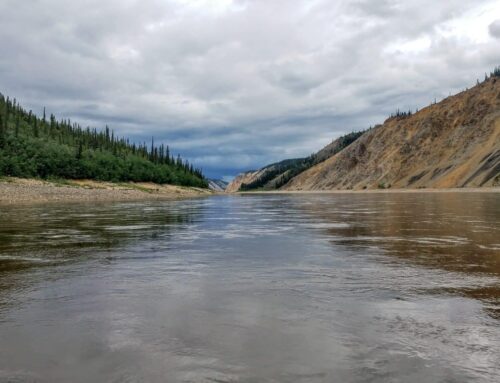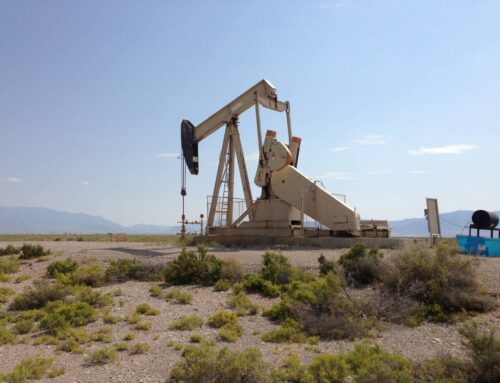Download & view this report as a PDF
The Bureau of Land Management (BLM) is responsible for leasing oil and gas for development throughout the federal onshore mineral estate. These leases may be issued on BLM lands, but also U.S. Forest Service lands, other federally owned lands, and tens of millions of acres of private lands where the federal government holds the subsurface mineral estate. At the end of fiscal year 2018, the BLM was managing more than 24 million acres leased for oil and gas development. Section 17 of the Mineral Leasing Act (MLA), 30 U.S.C. § 226, sets out the process for selling and managing leases for this publicly owned oil and gas.
Not all public lands may be leased, however. The Federal Land Policy and Management Act (FLPMA), 43 U.S.C. § 1701 et seq., requires the Secretary of the Interior and the Secretary of Agriculture to prepare land use plans balancing multiple uses of federal lands, and allows the withdrawal of specified lands from specified uses, including oil and gas leasing. In addition, some other lands are withdrawn under different land conservation programs, like the Wilderness Act.
Lease Sales
Under the MLA, the Secretary of the Interior is required to hold leases sales at least quarterly in every state where unleased lands are available. For ordinary oil and gas leases, the area to be offered in each lease tract is to be no more than 2,560 acres (leases in Alaska or in “tar sands” may be up to 5,760 acres), and the lands to be included in each lease are to be as compact as possible. For decades, sales were required to be held through in-person auctions, but a statutory change in 2014 allowed them to be conducted on the Internet. They are now held through a commercial on-line website called EnergyNet.
The lease sale process begins with public nominations of available lands to be included in a sale. The BLM state office considers these nominations and conducts an environmental review – typically an Environmental Assessment rather than a full Environmental Impact Statement. Based on that review, the state office then issues a notice of what tracts will be available for sale, with a period for public comments or formal protests on the proposed leases. After the comment period, the state office publishes the final list of tracts available for lease and opens the on-line bidding.
Bid Process
The MLA requires that leases go to the highest bidder who offers at least a “national minimum acceptable bid” per acre. Although BLM may set a higher minimum, the minimum bid has remained unchanged for decades at the statutory minimum of $2 per acre. These “bonus bids” are an amount per acre that the potential lessee pays to receive the lease, in addition to other payments that will be required under the lease – annual per-acre rental charges and royalties on any oil or gas produced from the lease. Following the receipt of bonus bids, the state office goes through a bidder qualification review before awarding the lease to the highest qualified bidder.
No Competition
Though the conduct of public auctions promotes market pricing for federal oil and gas leases, in fact many tracts are leased without competitive bidding. If any tracts offered do not receive a minimum bid, the MLA requires BLM to make them available to anyone who provides a minimum application fee. Each un-auctioned tract must remain available for this “lease by application” for two years before potentially returning to another future auction.
Lease Terms
The leases issued by BLM have a “primary term” of ten years. This is the period of time during which the lessee may explore for oil and gas deposits and attempt to bring them into production. If the lessee has begun drilling by the end of the ten-year term, the lease term may be extended by two years. If the lessee has begun to produce oil or gas “in paying quantities” by the end of the primary or extended term, then the lease is extended so long as the lessee continues to produce oil or gas.
During the period of the lease, the lessee must pay either rental on the land, or royalties on the oil and gas produced. As with the minimum bonus bid, BLM has currently set the rates for rentals and royalties at the minimum allowed by the law. The rental rate is set at $1.50 per acre per year for the first five years of the lease and $2 per year thereafter; rentals cease when royalty payments begin to exceed their price. Royalties are set at 12.5 percent of the value of the oil and gas produced.
Actual drilling for oil and gas under a federal lease is also regulated by BLM. BLM must approve a plan of operations for any surface disturbing activities, and issue a permit to drill each well. The MLA also requires that BLM mandate a bond or other financial assurance before drilling starts, to assure that the lease tract will be restored when operations cease. The bond must cover reclamation of all affected lands and waters.











Get Social